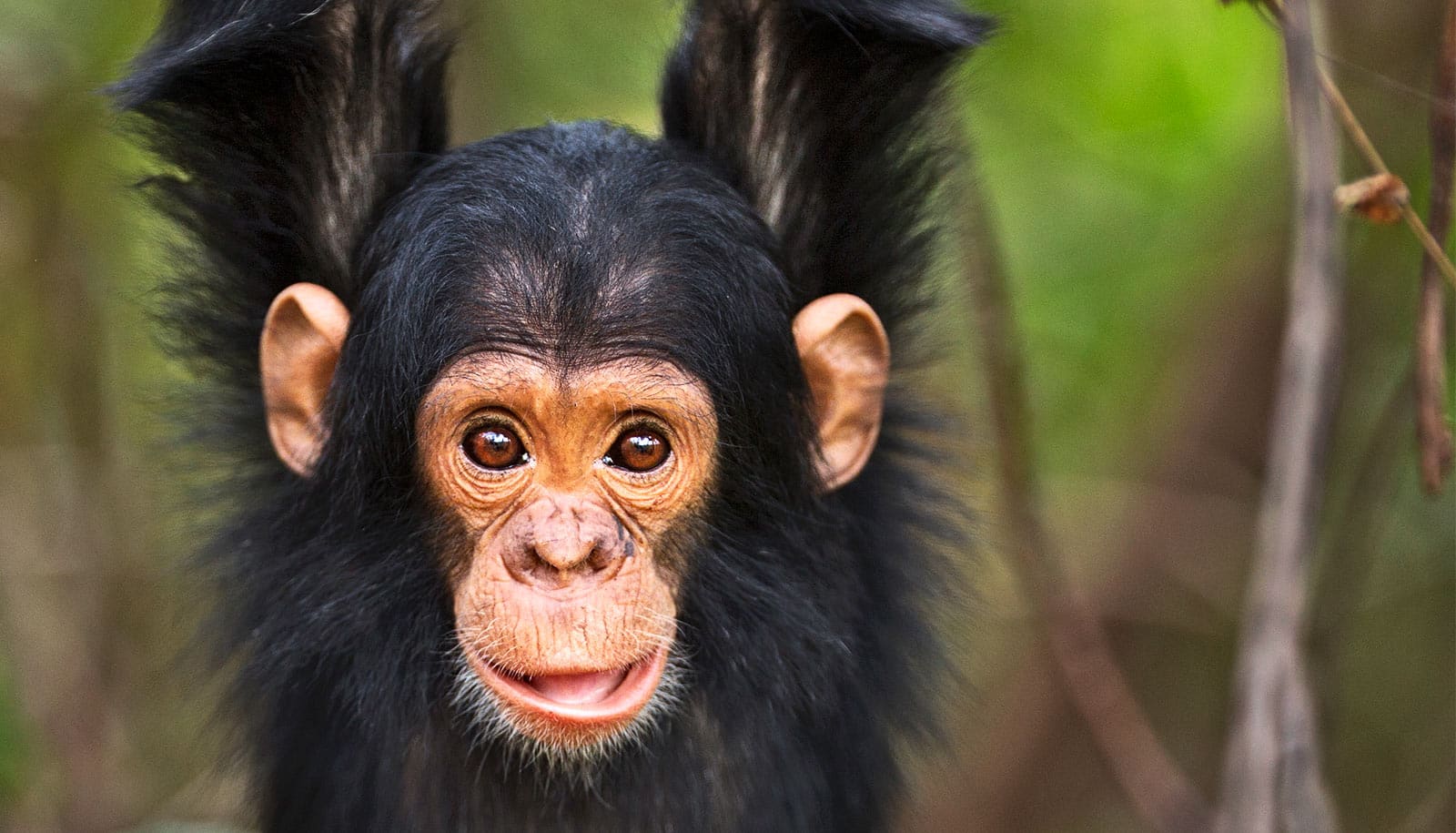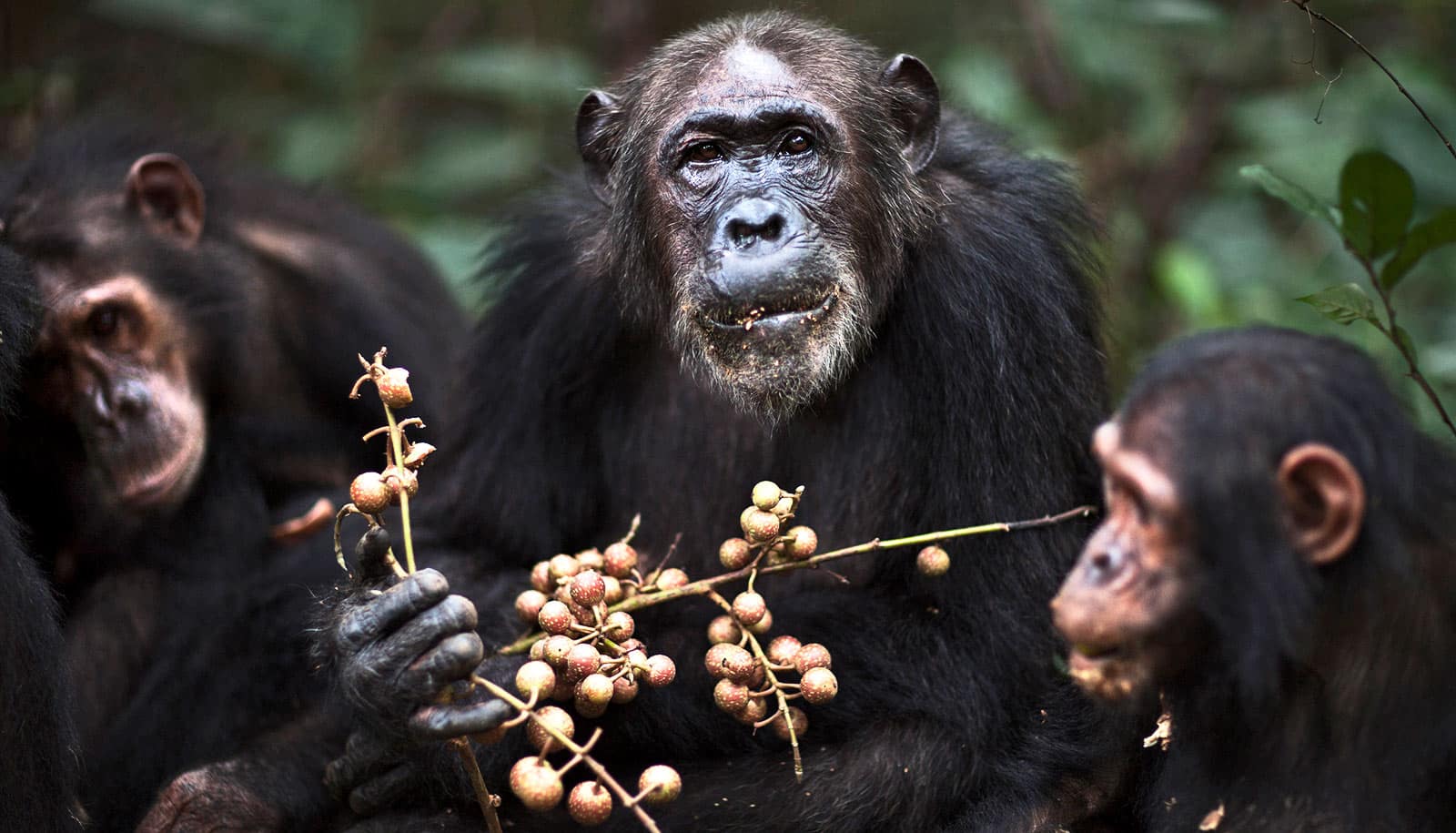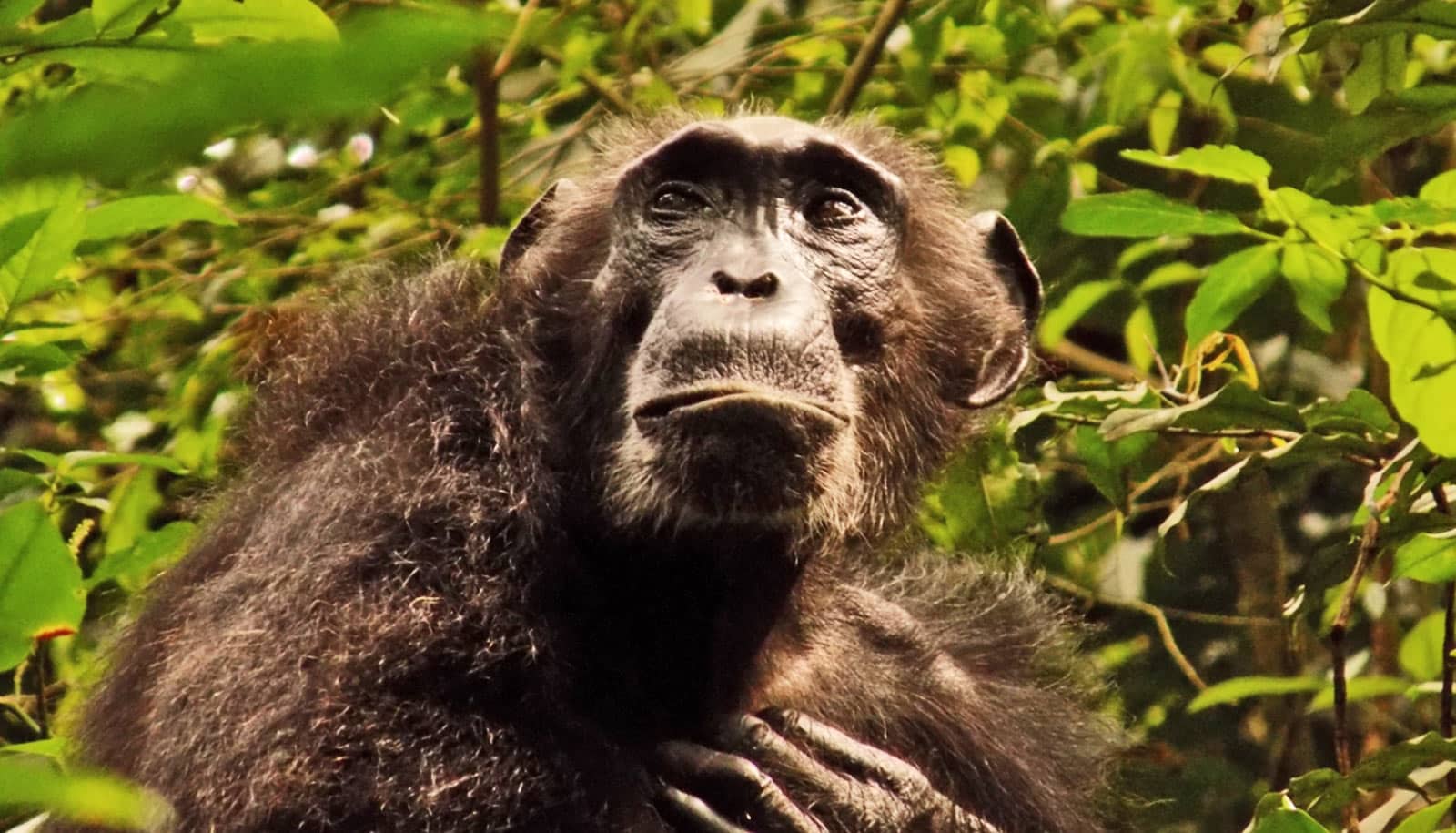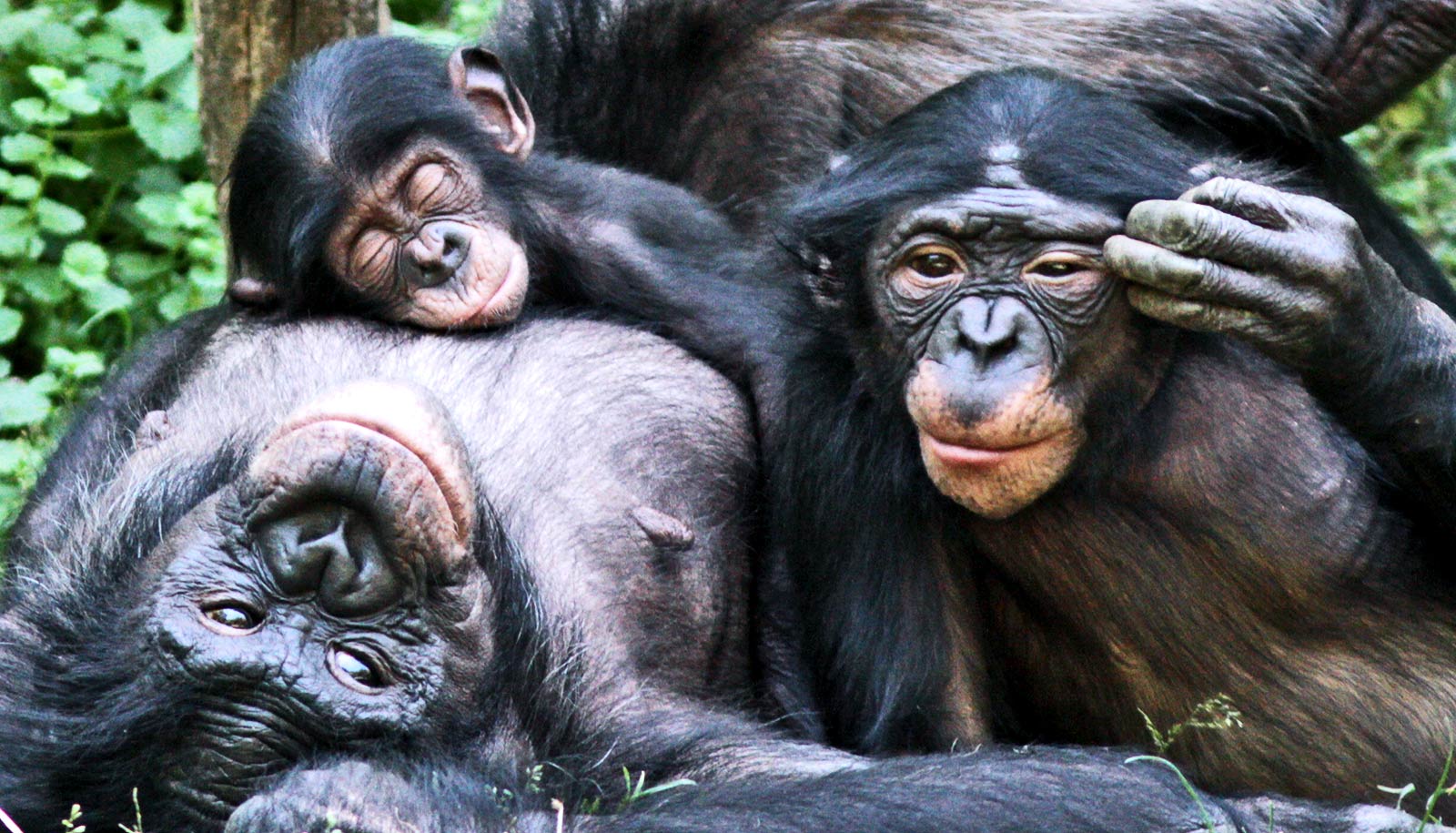When it comes to nurturing their young, mother chimpanzees go the extra mile, according to a new study.
Using 10 years of observational data on wild chimpanzees, researchers found that while adults often play, and young chimps play a lot, when food gets scarce, the adults put mutual play aside and focus on survival.
But in the meantime, mother chimps continue to be their offspring’s primary playmate—tickling and chasing. That suggests the mother chimps take on an indispensable role fostering their young’s physical and social development even when they are under food stress.
The study observations took place in Kibale National Park in Uganda. Zarin Machanda, an assistant professor of anthropology and biology at Tufts University, and her former postdoctoral associate Kris Sabbi, who is currently a college fellow in human evolutionary biology at Harvard University, led the study analysis.
Kibale is the most primate-dense forest in the world, with 13 species living there, including over 1,000 chimpanzees. Researchers started habituating the chimps to the presence of humans in 1987. Over the decades, teams of researchers took detailed field notes of almost every observable behavior—including climbing, feeding, grooming, calling, aggression, and play.
Through their previous work, Machanda and Sabbi were familiar with the playfulness of chimpanzees and decided to look deeper into the patterns of play behavior. They expected seasonal variations in food availability would affect adult chimps’ time spent playing.
For example, when supplies of quality fruits were low, the chimps focused on finding and gathering figs and leaves and put play time aside. Surprisingly, although chimp mothers had the same challenge in finding food, they continued devoting a lot of their time to nurturing their offspring’s development through play.
Why do some, but not all, mammals play?
The research on play ties into an effort to understand the evolution of leadership among chimps.
“We were trying to see whether chimps have only one pathway to leadership, which has always been assumed to be aggressiveness, or whether play and other behaviors build multiple dimensions of character that might make them more or less successful,” says Machanda.
Play is not very common in the wild, at least among adult animals. Young mammals do play often, but mostly with each other, or at the expense of an exasperated and passive adult. Exceptions include dolphins, monkeys, and apes. Natural selection tends to suppress the costly exercise after it serves its purpose for development, and time comes to focus on finding food, watching out for predators, and mating. With chimps, however, adult play serves to cement social bonds.
“I think what sets primates apart is that they spend more time growing up compared to other mammals,” says Machanda. “They also have highly developed brains and live in structured groups, with very specific rules governing interactions between individuals. Play permits them to build not only physical skills, but also the skills of social interaction.”
Social structure in the chimpanzee world may also explain why mother chimps sometimes become the primary play partners for their young. The chimpanzees have a very fluid social system called fission-fusion, which means a group of 60 chimps, for example, may have smaller groups break away for days or weeks, which then merge again while other groups break off.
When food becomes scarce, chimp mothers tend to break away into smaller groups or solo with their babies. “But when they’re doing that, they are also limiting the ability of their young ones to play with others, and the moms become the primary playmates,” says Sabbi. “They’re trading off that lower feeding competition in the larger group for more time and energy being spent playing with their little ones.”
By comparison, a troop of 60 baboons always sticks together, so baby baboons always have other baboons close to their age nearby to play with. Baboon mothers usually do not play with their babies.
Different kinds of play
Play among the chimps often divides depending on their sex.
“It’s not uncommon to see male chimps to engage in more aggressive types of play, while females are doing a type of play related to parenting,” says Machanda. “You see them practice carrying things—a kind of preparation for future maternal behavior. Males often size each other up, and when they hit their second birthday, play style changes and can get rougher.”
Mothers are often the ones that juveniles and older infants come back to. “If they’re playing with somebody and it starts to get a little bit too rough, they’ll switch it up and go back to playing with mom, because at the end of the day, it’s a very safe place,” says Sabbi.
“If we compare to humans, it’s very easy to find lots of evidence in the child psychology literature for how important it is for human mothers and fathers to be playing with their children, especially at really young ages. Moms and dads are important first play partners before kids branch out into their own social networks,” she says.
“As a mom, it’s impossible to watch my kids and not see them as primates,” says Machanda. “I can see the incredible value of play in the lives of my own kids, when I’m playing with them or when I’m seeing them play with their friends.
“I can see how they’re using it to develop certain skills. I can also relate to the chimp moms and the energy cost of play when their kids are jumping on them, and they just want to take a nap. But watching the chimps has made me a better parent.”
The research appears in Current Biology.
Source: Tufts University



